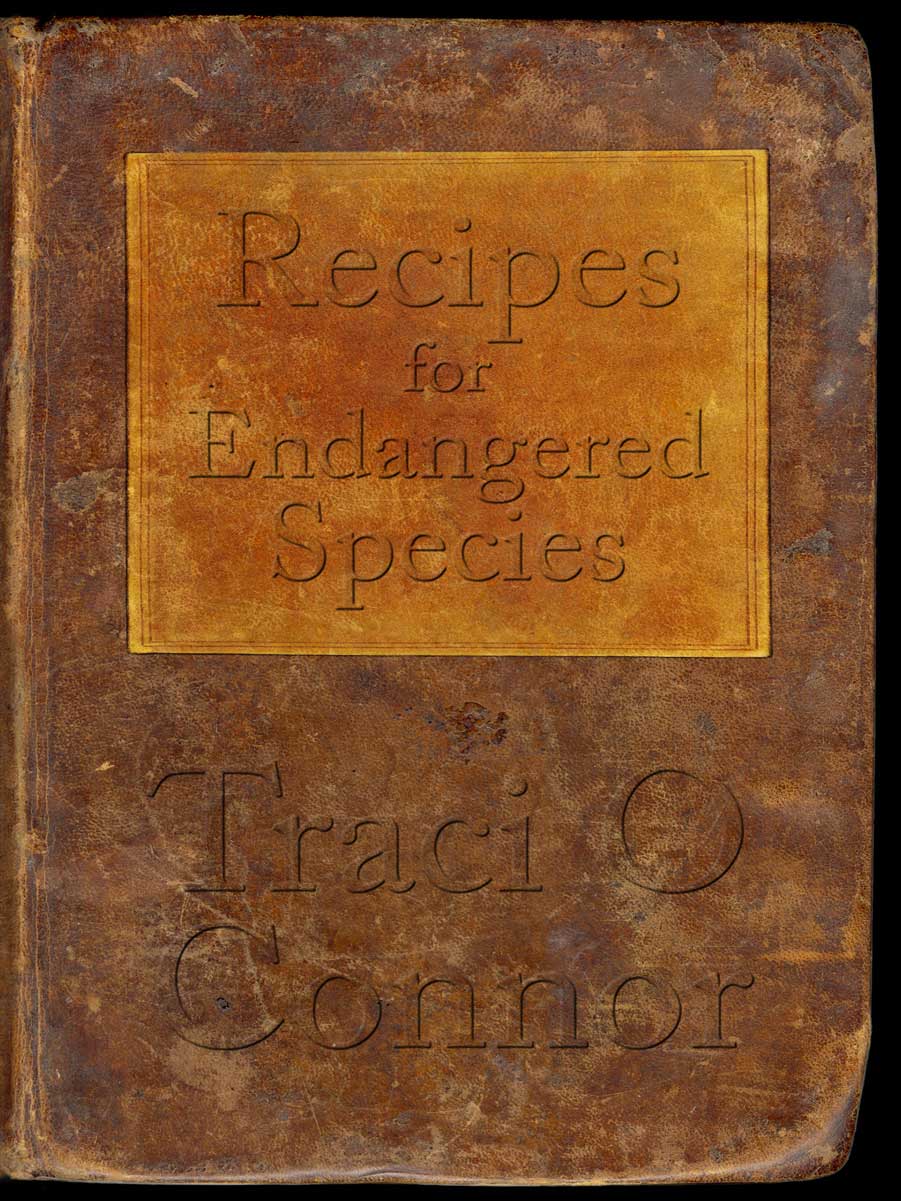
Traci O. Connor
Traci O. Connor is the author of Recipes for Endangered Species, from Tarpaulin Sky Press, and has published fiction, non-fiction, and poetry in journals such as Barrow Street, Fourteen Hills, Gargoyle, Margie, Mid-American Review, LIT, and DIAGRAM. Traci holds an M.F.A. and a PhD from the University of Utah and is a writer and assistant professor at Guilford College. She lives with her family in North Carolina.

Traci O. Connor
Traci O. Connor is the author of Recipes for Endangered Species, from Tarpaulin Sky Press, and has published fiction, non-fiction, and poetry in journals such as Barrow Street, Fourteen Hills, Gargoyle, Margie, Mid-American Review, LIT, and DIAGRAM. Traci holds an M.F.A. and a PhD from the University of Utah and is a writer and assistant professor at Guilford College. She lives with her family in North Carolina.
Recipes for Endangered Species
by Traci O. Connor
Fiction. Short Stories. Images. 208 pages. Paperback. 2010
A dying lover plans to become a zombie. An anxious woman can’t decide if she’s animal or human. A Jesus the size of a pencil lurks beneath the bed. Monsters, monsters, everywhere. But are they real or imagined? The stories in Recipes for Endangered Species hinge on this uncertainty. Lyrical, darkly funny, sometimes disturbing, this collection explores the secret desires that render people not only imperfect and dangerous, but also authentically human. Such ambiguity lies at the heart of Traci O. Connor’s Recipes for Endangered Species, resulting in strangely beautiful stories obsessed with the unreasonable, the monstrous, and the extraordinary living among—and within—us.


Recipes for Endangered Species
by Traci O. Connor
Fiction. Short Stories. Images. 208 pages. Paperback. 2010
A dying lover plans to become a zombie. An anxious woman can’t decide if she’s animal or human. A Jesus the size of a pencil lurks beneath the bed. Monsters, monsters, everywhere. But are they real or imagined? The stories in Recipes for Endangered Species hinge on this uncertainty. Lyrical, darkly funny, sometimes disturbing, this collection explores the secret desires that render people not only imperfect and dangerous, but also authentically human. Such ambiguity lies at the heart of Traci O. Connor’s Recipes for Endangered Species, resulting in strangely beautiful stories obsessed with the unreasonable, the monstrous, and the extraordinary living among—and within—us.
These deftly written stories rear and buck against the confines of the traditional story collection, bursting out in images and recipes, galloping back and forth between traditional paragraphs and alternate forms. . . . Even though you’re moving fast enough that you could end up anywhere, Connor’s thought about every single word, every gesture, and she can turn each story on a dime. This is a marvelous debut. (Brian Evenson) These stories constitute some tender, aching love stories. Connor’s characters are curious specimens who don’t quite fit in, but have rich inner lives, such as Zha Zha, the chronically unfaithful exotic dancer in “The Flying Codona” (“tits are made of cantaloupe and she eats them with a spoon”), whose lovelorn boyfriend consoles himself by dreaming of being a trapeze artist. “Starla and June” is a creepy, Hitchcockian tale about an unraveling love affair involving a prosthetic hand that offers words of courage and strength: “Oh, Pet, she’ll be back,” says the hand. “Van Gogh Dreams” juxtaposes vivid descriptions of flowers with excerpts from the painter’s late asylum notebooks to evoke the chilling stream-of-consciousness of a troubled narrator. “Monkey Teeth” is a kind of nut job’s notebook, full of Lolita-like obsession (including photographs). Cocktail recipes conclude each of the stories in this varied and occasionally unnerving debut collection. (Publishers Weekly) Points of view shift and tilt, almost imperceptibly, and bring you to understand identity differently than what you previously allowed for: these disparate voices, these parallax views, the linguistic franks belong together, the stories say, and the way Connor bends and warps language in humid paragraphs, doesn’t let you argue. (Matt Dube, Diagram)Traci O. Connor’s subject matter is never easy. Her work cuts to the core, exposing cultural taboos and psychic turmoil. Her use of the fantastic emerges organically from her material, compelling the reader to face her own fears and prejudices, to embrace the monstrous within herself, to live with greater curiosity and compassion. (Melanie Rae Thon)
These deftly written stories rear and buck against the confines of the traditional story collection, bursting out in images and recipes, galloping back and forth between traditional paragraphs and alternate forms. . . . Even though you’re moving fast enough that you could end up anywhere, Connor’s thought about every single word, every gesture, and she can turn each story on a dime. This is a marvelous debut. (Brian Evenson) These stories constitute some tender, aching love stories. Connor’s characters are curious specimens who don’t quite fit in, but have rich inner lives, such as Zha Zha, the chronically unfaithful exotic dancer in “The Flying Codona” (“tits are made of cantaloupe and she eats them with a spoon”), whose lovelorn boyfriend consoles himself by dreaming of being a trapeze artist. “Starla and June” is a creepy, Hitchcockian tale about an unraveling love affair involving a prosthetic hand that offers words of courage and strength: “Oh, Pet, she’ll be back,” says the hand. “Van Gogh Dreams” juxtaposes vivid descriptions of flowers with excerpts from the painter’s late asylum notebooks to evoke the chilling stream-of-consciousness of a troubled narrator. “Monkey Teeth” is a kind of nut job’s notebook, full of Lolita-like obsession (including photographs). Cocktail recipes conclude each of the stories in this varied and occasionally unnerving debut collection. (Publishers Weekly) Points of view shift and tilt, almost imperceptibly, and bring you to understand identity differently than what you previously allowed for: these disparate voices, these parallax views, the linguistic franks belong together, the stories say, and the way Connor bends and warps language in humid paragraphs, doesn’t let you argue. (Matt Dube, Diagram)Traci O. Connor’s subject matter is never easy. Her work cuts to the core, exposing cultural taboos and psychic turmoil. Her use of the fantastic emerges organically from her material, compelling the reader to face her own fears and prejudices, to embrace the monstrous within herself, to live with greater curiosity and compassion. (Melanie Rae Thon)

